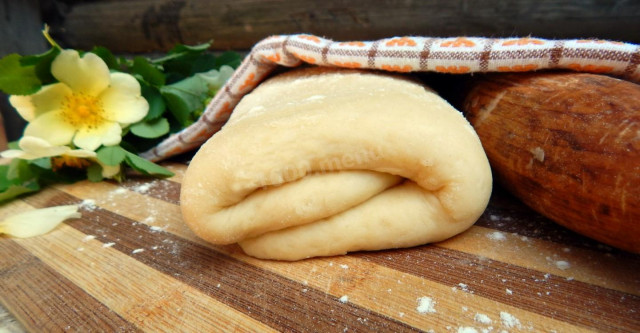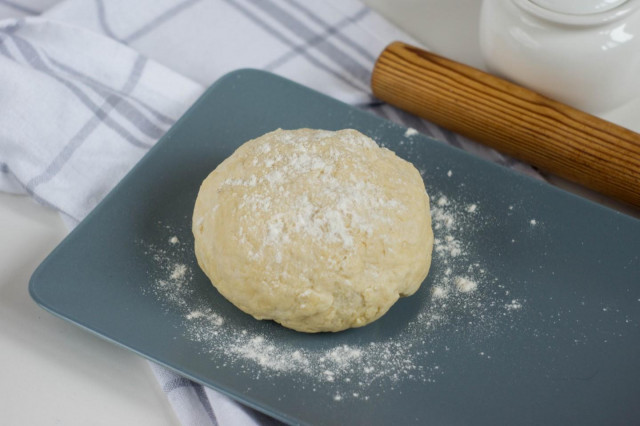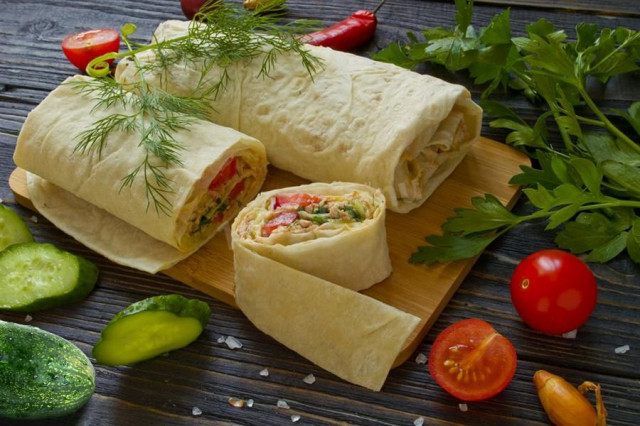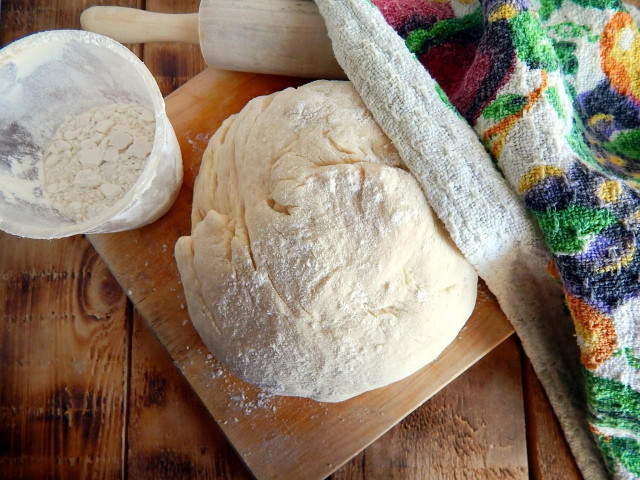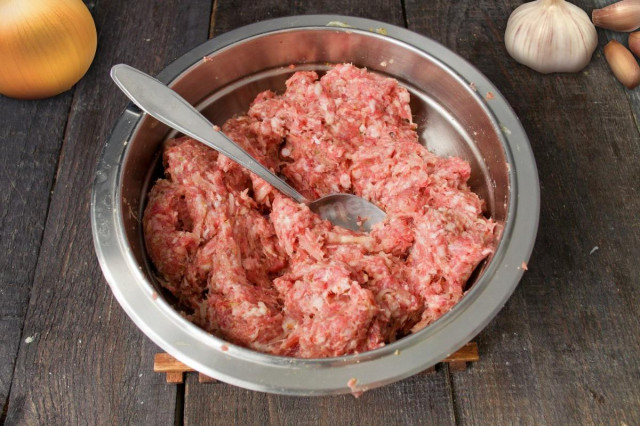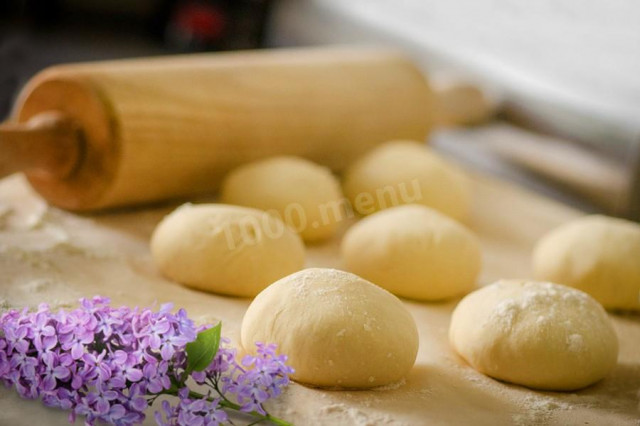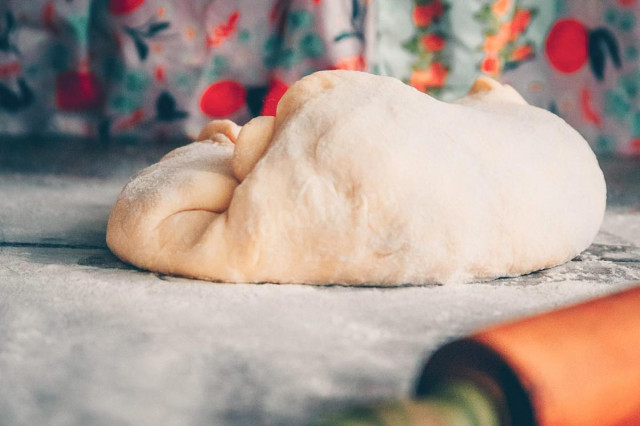Composition / ingredients
Step-by-step cooking
Step 1:
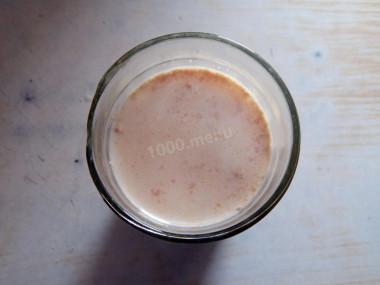
Prepare the ingredients for the dough. Unlike the usual yeast dough for puff pastry, the comfortable temperature is about 18 degrees. Such conditions, of course, are difficult to create in an ordinary kitchen, so the dough will need to be cooled periodically, but hypothermia is also bad for this butter-based dough. Let's prepare the sourdough. Of course, it is better to use pressed yeast for the dough, but if there are no such at hand, dry ones will also come off
Step 2:
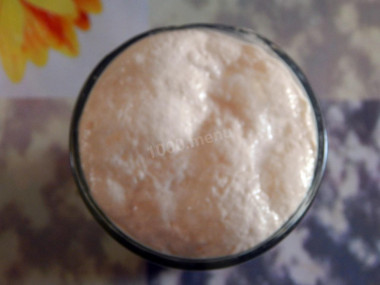
Pour 100ml of warm milk into a glass (about 30 degrees), add sugar and yeast. Mix and add a tablespoon of wheat flour. Mix again and put in a warm place for 30 minutes. During this time, a yeast cap will appear on the surface of the sponge, which means that everything has been done correctly, the yeast has been activated.
Step 3:
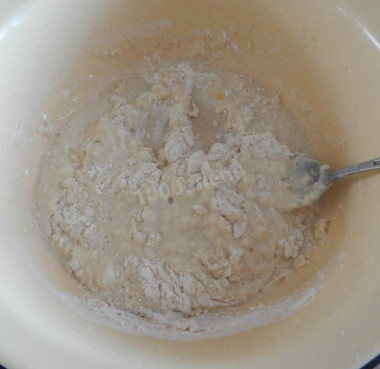
Pour the sourdough into a large bowl. Pour in the rest of the warm milk, add salt. Mix and add the sifted wheat flour in parts. Knead the dough, when it seizes, add butter softened at room temperature (50g) to the mass.
Step 4:
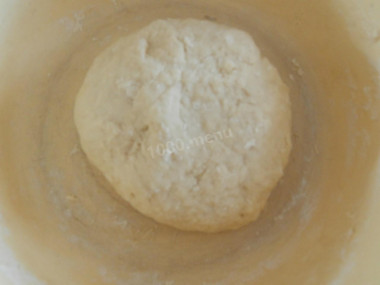
We continue to knead the dough, we do it with our hands until it becomes elastic and smooth. Roll the dough into a ball, put it in a bowl, cover it with cling film on top and, unlike the usual yeast dough, put it in the refrigerator for 4 hours. The remaining softened butter is rolled out between two sheets of parchment into a rectangle and let it also cool in the refrigerator. Take it out of the refrigerator before the test itself for 15 minutes.
Step 5:
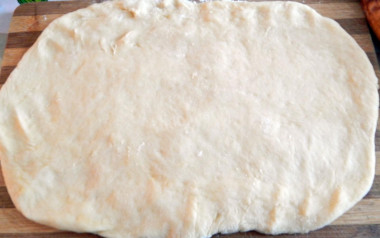
We take the dough out of the refrigerator and roll it out on a floured surface into a rectangular layer about 1 cm thick.
Step 6:
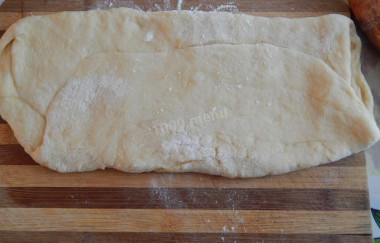
Put butter in the middle of the dough, wrap its edges of the dough inside like an envelope, and roll out the dough again into a layer about 1 cm thick.
Step 7:
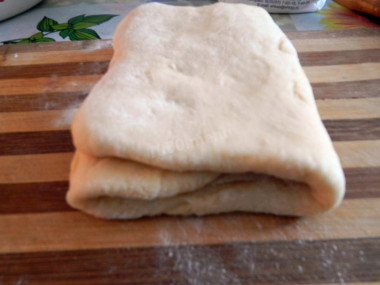
If necessary, sprinkle the dough with flour, but do not make it too flour. Once again we carry out such manipulations with the test. There should be 9 layers. Wrap it with cling film and put it in the refrigerator for another 1 hour.
Step 8:
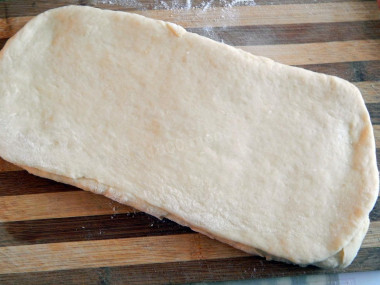
After the specified time, we take out the dough and roll it out again and fold it three times. Put it back in the refrigerator for 1 hour. Repeat the procedure one more time. It is better to leave the finished puff pastry dough in the refrigerator overnight before forming products from it. And then you can move on to baking delicious buns with cheese or any other filling. Bon appetit!
Calorie content of the products possible in the composition of the dish
- Whole cow's milk - 68 kcal/100g
- Milk 3.5% fat content - 64 kcal/100g
- Milk 3.2% fat content - 60 kcal/100g
- Milk 1.5% fat content - 47 kcal/100g
- Concentrated milk 7.5% fat content - 140 kcal/100g
- Milk 2.5% fat content - 54 kcal/100g
- Granulated sugar - 398 kcal/100g
- Sugar - 398 kcal/100g
- Butter 82% - 734 kcal/100g
- Amateur unsalted butter - 709 kcal/100g
- Unsalted peasant butter - 661 kcal/100g
- Peasant salted butter - 652 kcal/100g
- Melted butter - 869 kcal/100g
- Salt - 0 kcal/100g
- Wheat flour - 325 kcal/100g
- Dry yeast - 410 kcal/100g

